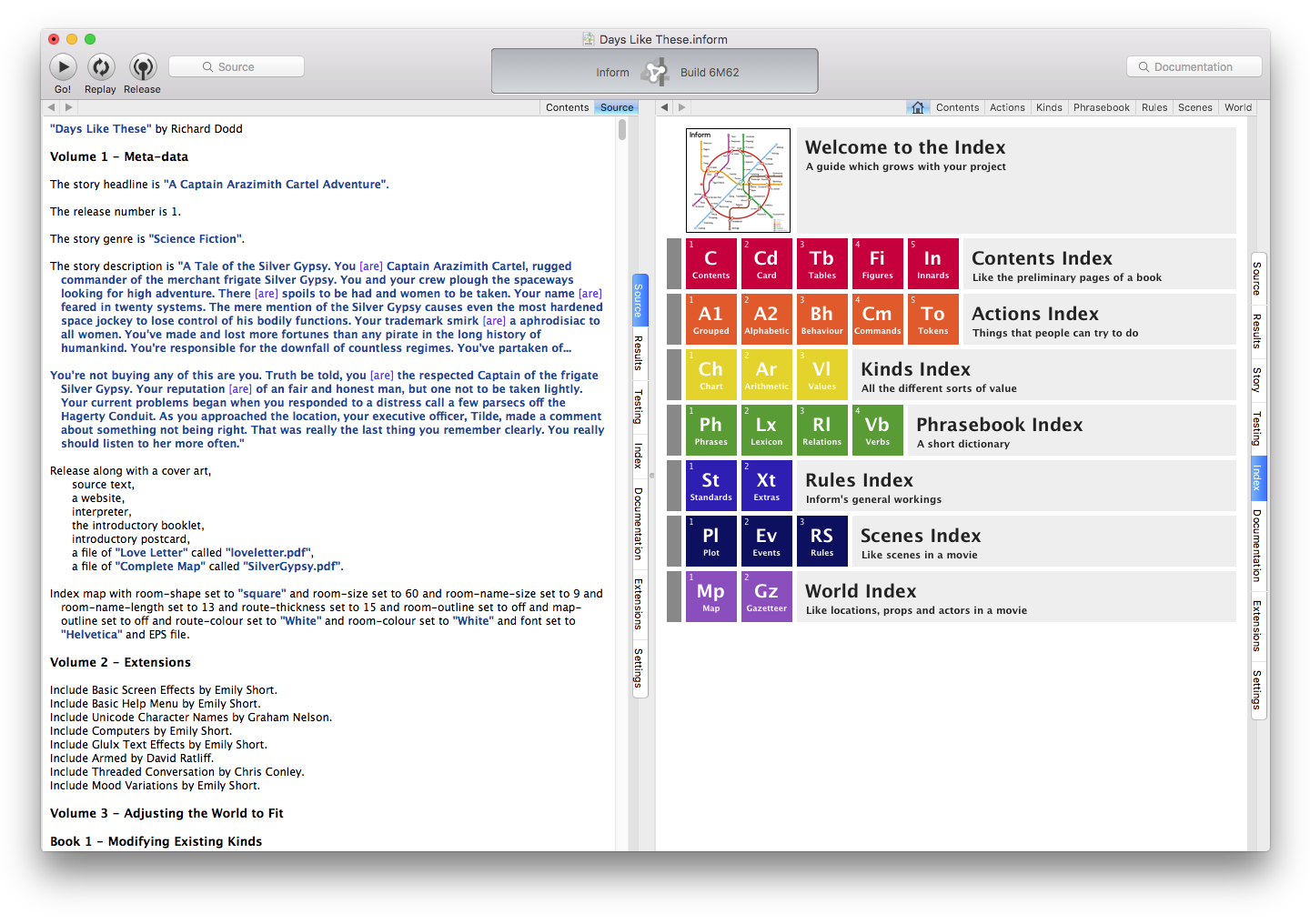Welcome to my interactive fiction page.
Interactive fiction is a story that the reader interacts with and directs by typing in command. Those of you over the age of forty may remember old Infocom text adventures. A primary example being the Zork series (Zork I, Zork II, and Zork III).
Or as Wikipedia has it:
Interactive fiction, often abbreviated IF, is software simulating environments in which players use text commands to control characters and influence the environment. Works in this form can be understood as literary narratives and as video games. In common usage, the term refers to text adventures, a type of adventure game where the entire interface can be “text-only”. Graphical text adventure games, where the text is accompanied by graphics (still images, animations or video) still fall under the text adventure category if the main way to interact with the game is text. Some users of the term distinguish between “interactive fiction” that focuses on narrative and “text adventures” that focus on puzzles. Meanwhile, more expansive definitions of “interactive fiction” may include all adventure games, including wholly graphical adventures such as Myst.
There is a small community of enthusiasts on the internet continuing and advancing the art of IF. They have created IF development tools to create story files. These story files can then be opened in an interpreter to play the story. The development tool of choice for me is called Inform. I use Zoom for an interpreter.
One of the cool features of Inform is the ability for it to create a website for a published work and also allow it do be played within a web browser. The mini-site created and linked to below includes a PDF explaining the basics of IF as well as the simple map and the game itself.
The only story currently available:
- Grading on a Deadly Curve – a simple test game I am using to develop ways to interact with non-player characters. The player is a spy in training who needs to dispatch a bad spy to get a key to leave the training area. Right now it is easy to do because the spy does not shoot back or even run away.

